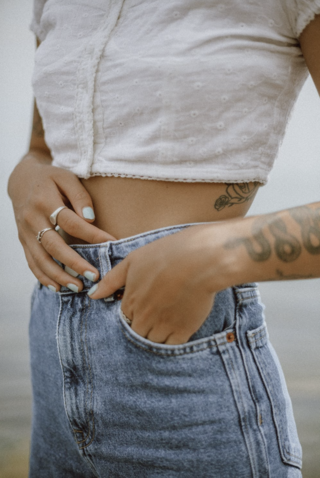Sex
A Pocketful of Inequities
The male/female divide on pockets is an age-old conflict.
Posted February 13, 2021
Erector sets. Crystal radios. Boxing gloves. Boys got all the fun stuff, while girls got dolls, girly board games, kiddy aprons, socks with lace on the edges, looms to make potholders, and frilly pajamas.

What I wanted most, however, were POCKETS. If I owned a pair of pants or a jacket with pockets, those somewhat secret compartments tended to be there just for show—not for a girl’s actual use. Even the pockets in a pair of girls’ jeans were only a half-finger deep. And not a single jacket I owned had that cool interior pocket—the kind you could slip a wallet into.
I began questioning these things, including why I suddenly had to carry a purse and my brothers did not. What did I need a purse for? To carry a wallet? I rarely used a mirror and I carried no comb. To this day, I have a lovely handbag collection, but I use few of them on a regular basis. I usually opt instead to carry around a zip-up travel wallet that I slide into my car door and grab a debit card from, only to slip that piece of plastic into the rear pocket of my jeans or jacket so I can walk around HomeGoods or Costco hands-free. If I dare take a few steps from my shopping cart, I don’t have to worry about something valuable being taken in my absence. And yes. I actually USE the pockets in my blazers, feeling just a tad victorious about it.
CBS News correspondent Faith Salie recently studied the phenomenon of pockets throughout history in a fascinating little video where she talked about the gender inequities of the pocket. Evidently, there was a time before pockets, when women and men alike wore what might be referred to as “medieval fanny packs.” Later on, pockets were introduced to those puffy pants men used to wear with leggings, and eventually, tiny, imperceptible slit pockets were added to women’s voluminous skirts.
There are also stories about when pockets were banned altogether during the French Revolution because they could contain secrets. It was after that when fashion designers touted the “column” dress, where there was absolutely no place for pockets and that, says Salie, is when “sartorial inequality” began against the female sex.
Did you know that when you see all those old tin-type photos of men with one hand in a pocket, it was often considered scandalous? Placing both hands in pockets, however, was considered downright vulgar by the fairer sex. According to Salie, after a time, the idea of men with their hands in their pockets became a sign of self-possession, however. Soon, 20th-century women began wanting the same option for expressing themselves. That's when suffragettes and flappers began to make pockets political, she says.
Coco Chanel was instrumental in bringing a more tailored look to women’s clothing, and by the golden age of Hollywood and after, then WWII arrived, pockets in women’s “trousers” were everywhere—especially shown off by celebrities such as Katharine Hepburn, Marlena Dietrich, and Brigette Bardot.
But women were mostly left out of the designer equation when it came to pockets, as if their practical needs were not considered as important as men’s. In fact, there are still FAKE pockets on women’s clothing (flaps as it were). And the pockets that do exist in women’s jeans are not on a level playing field with those of men’s. The Pocket Project’s Julie Siegel reports that on average, men’s pockets are 3 inches deeper than women’s when we DO get them. She looks to bring attention to pocket inequality, designing dresses with deep pockets that can hold everything from wallets to lip gloss.
And so perhaps in my lifetime, I might have just enough pocket room for everything I tote with me. After all—if women could, like men, wear suits and polo shirts, why can’t they have pockets as well? The day I find a women’s blazer with an inside pocket, however, I know I will dance a jig.


